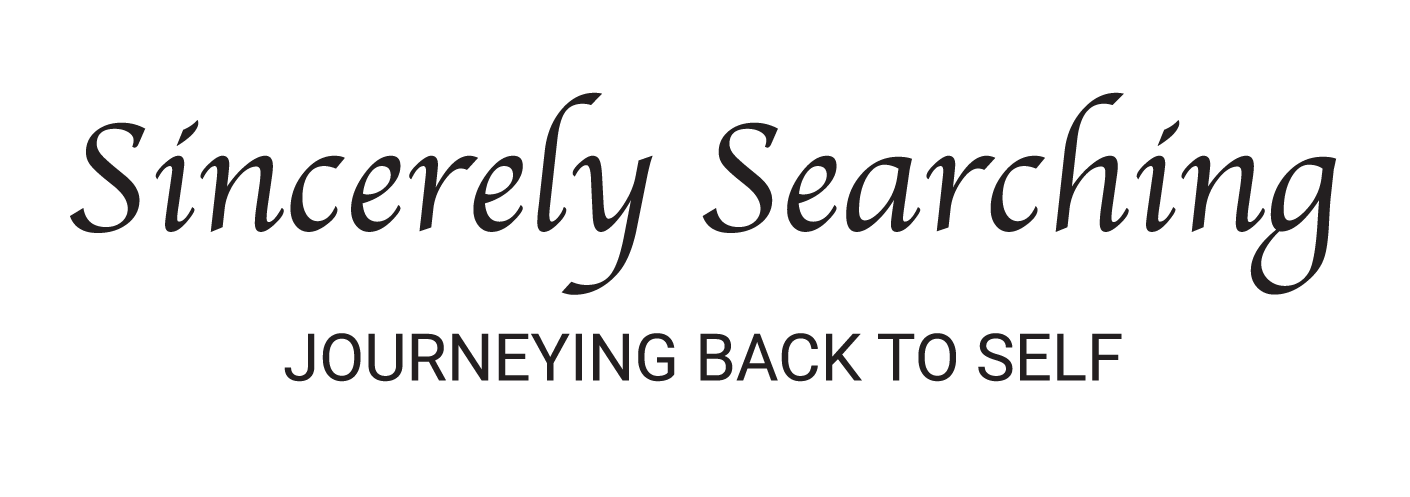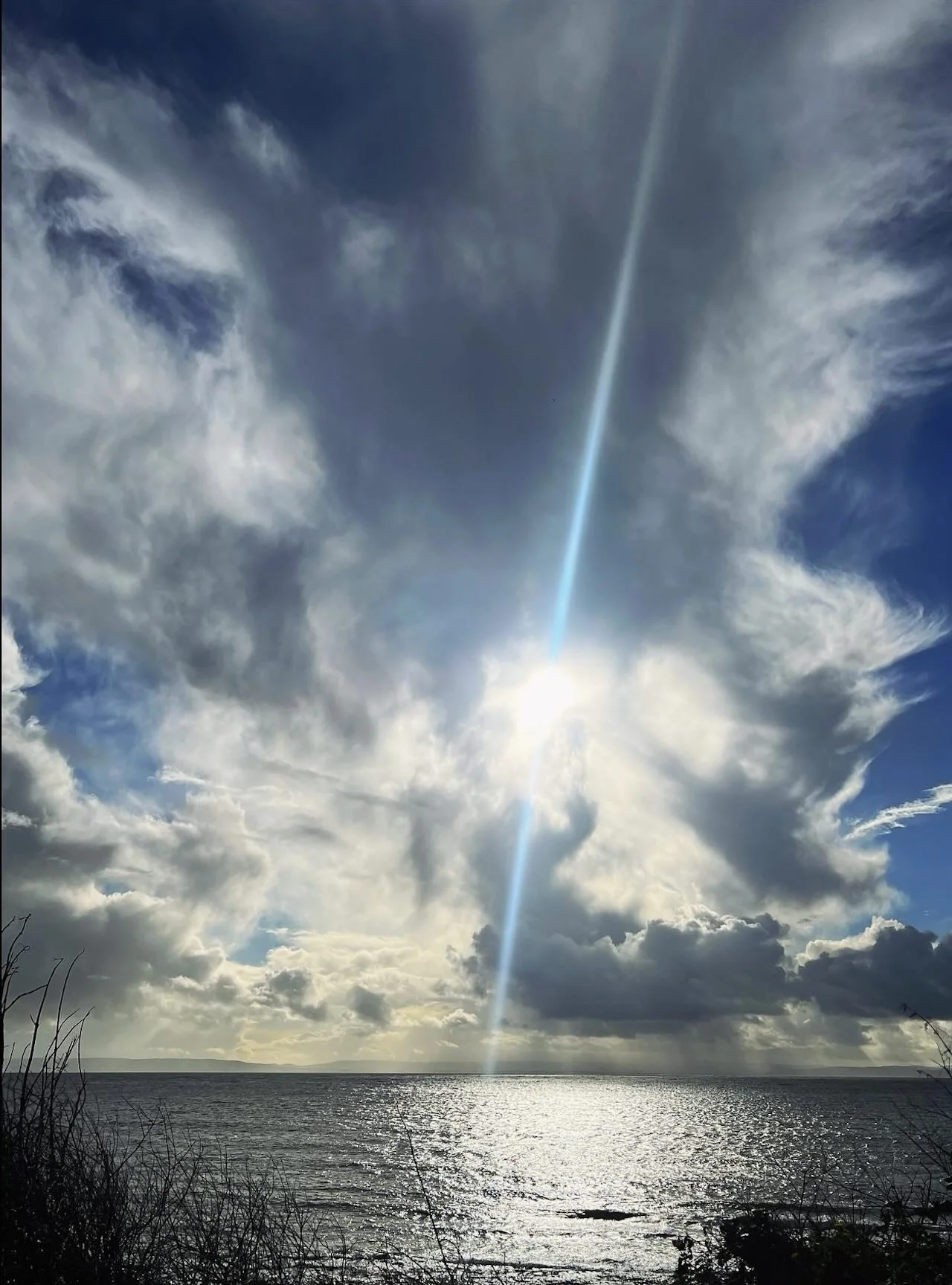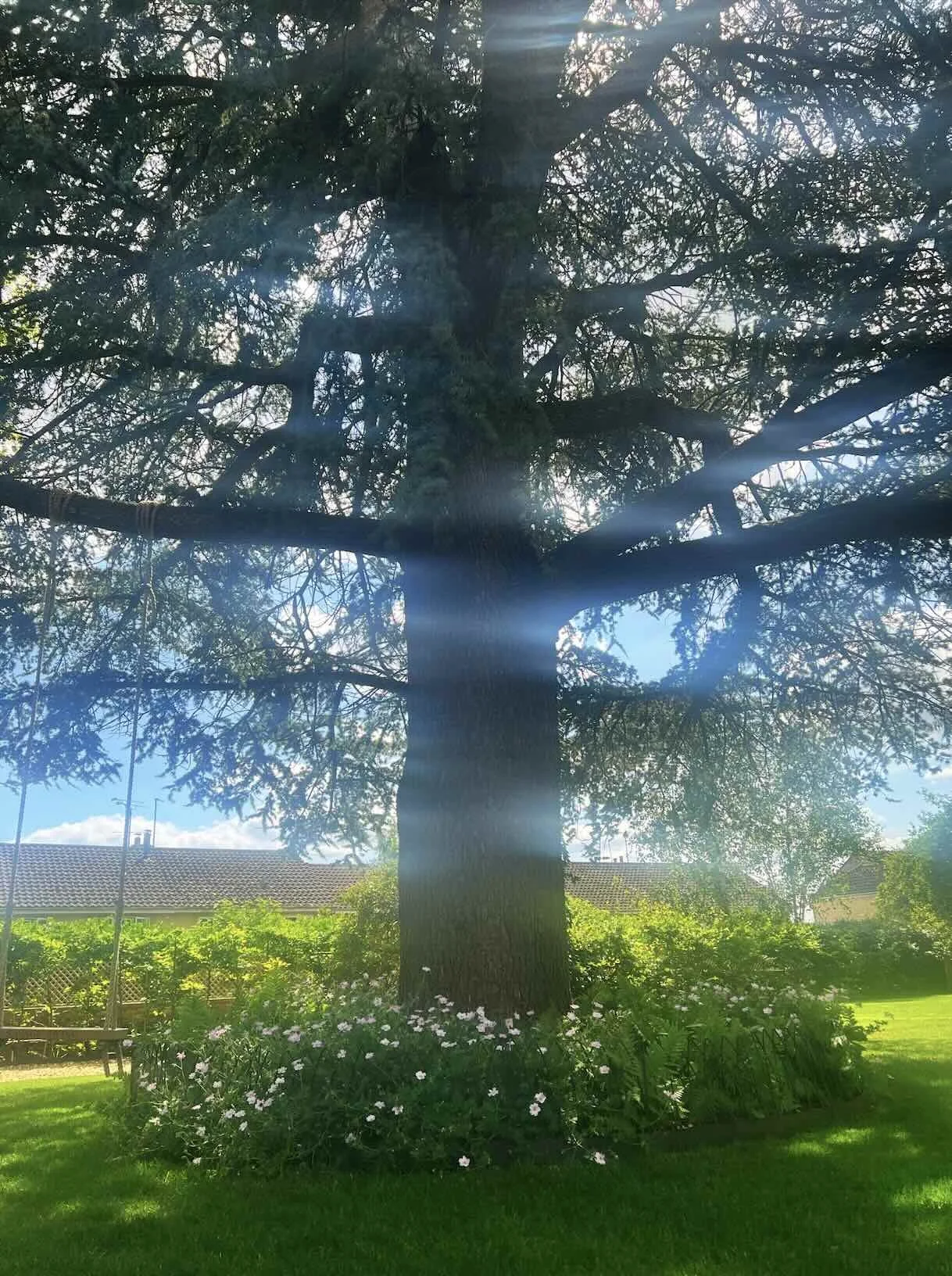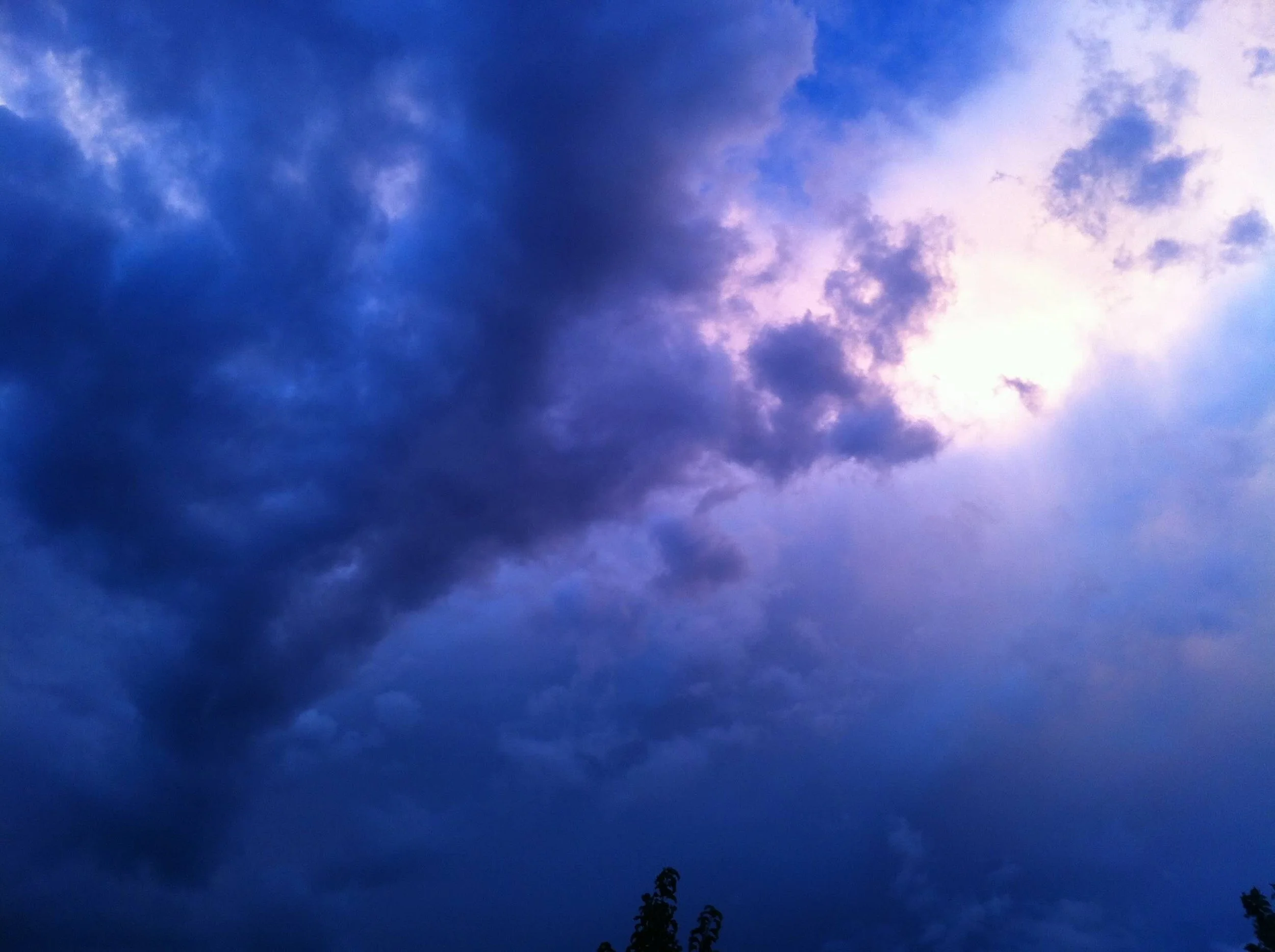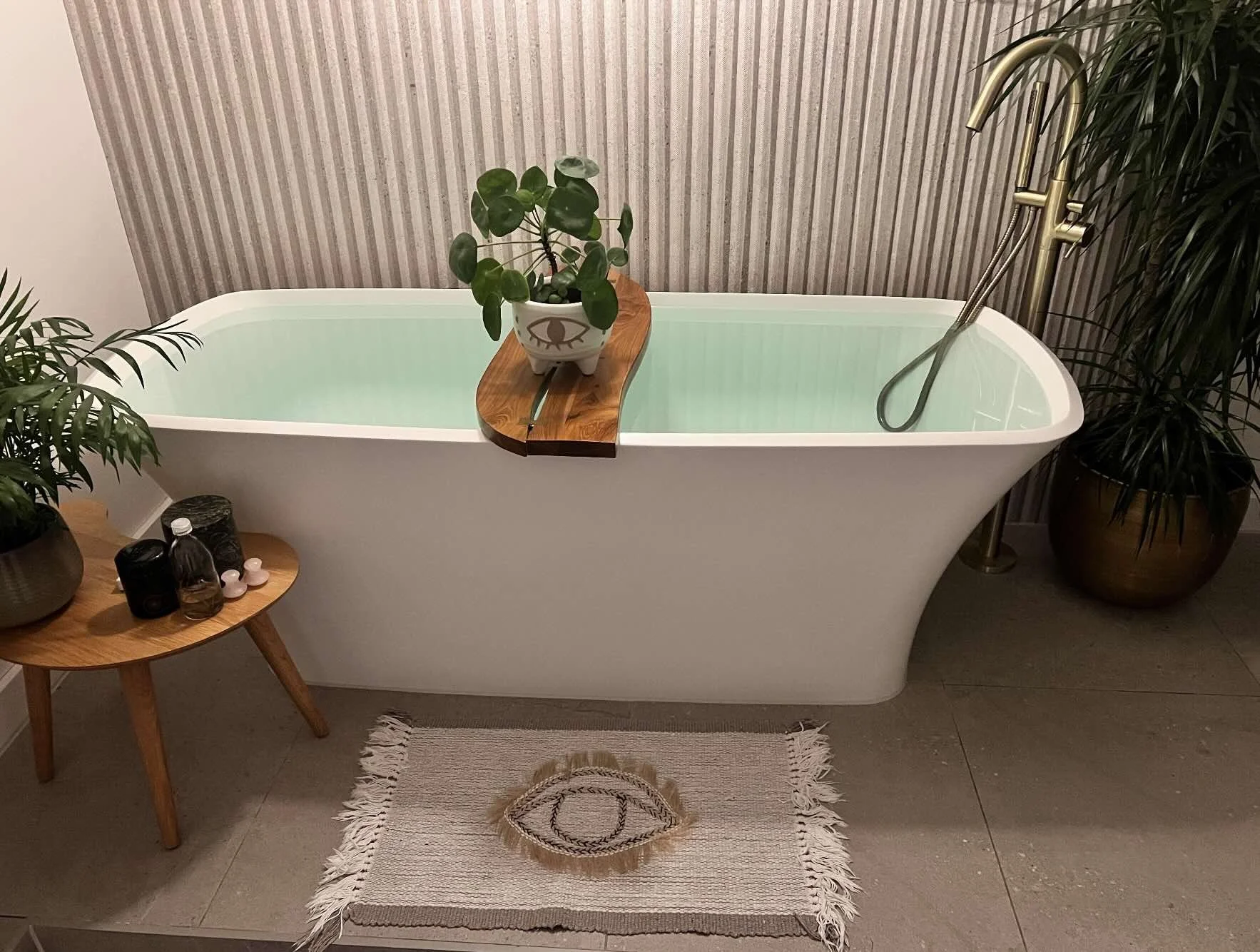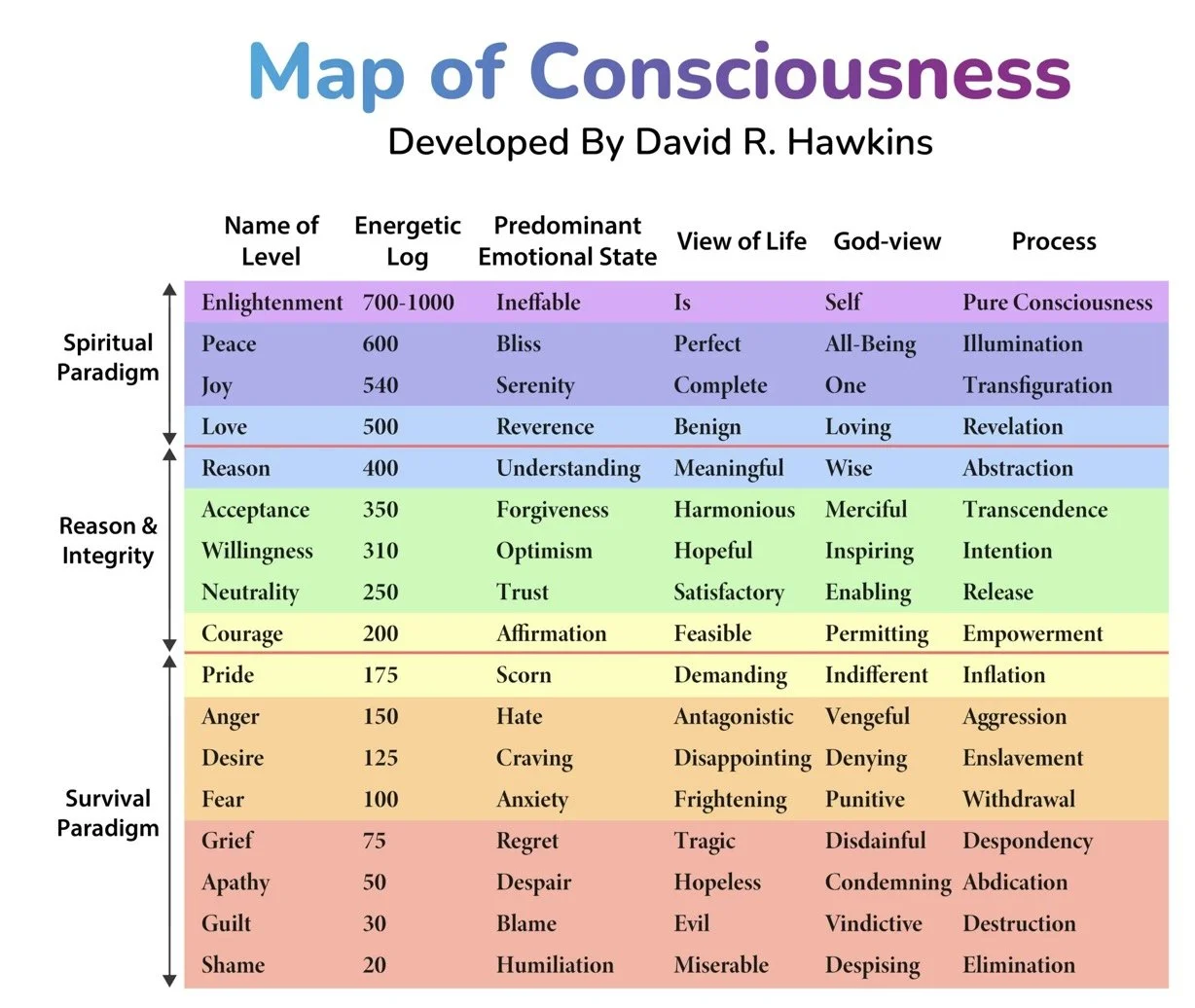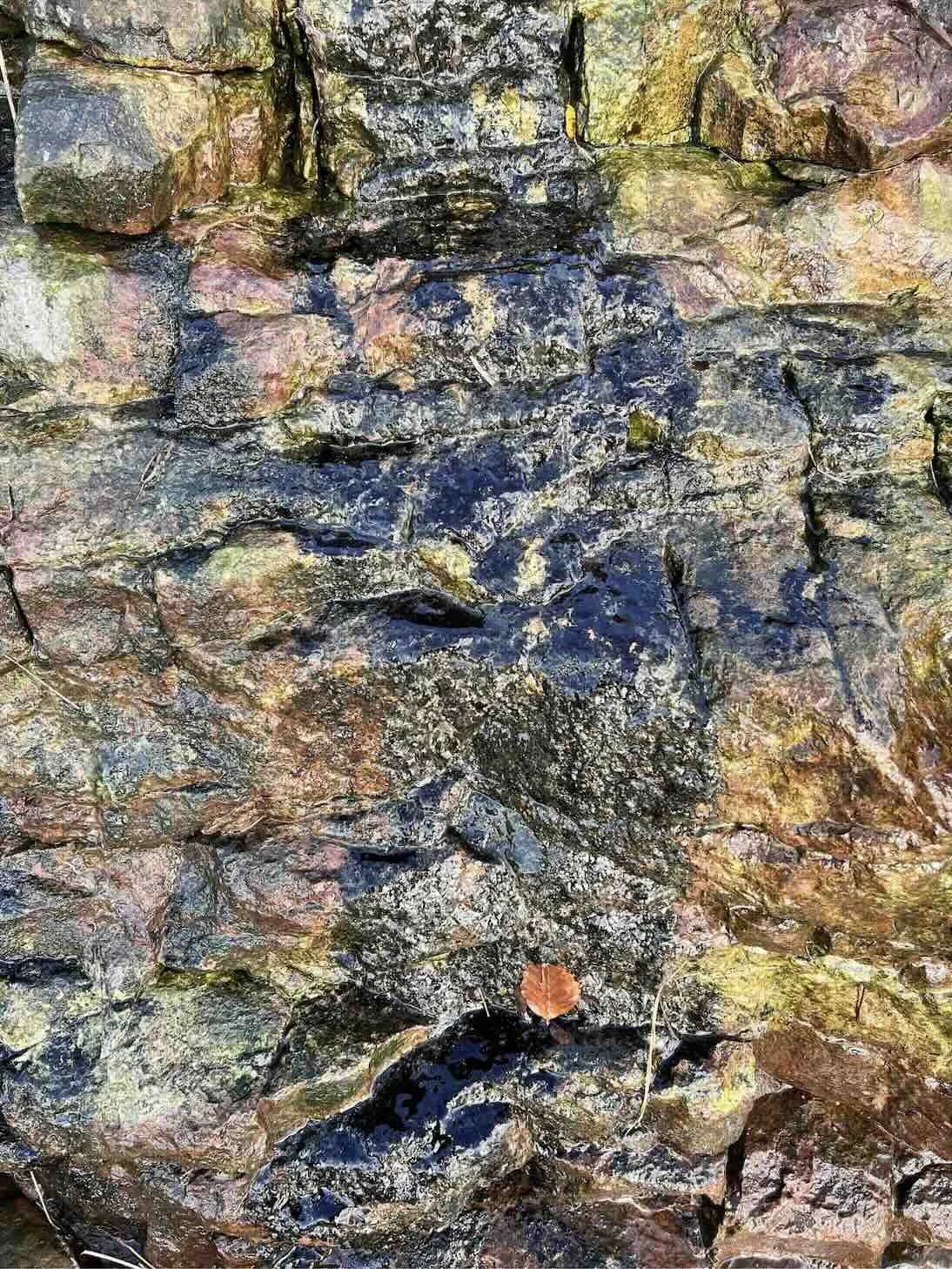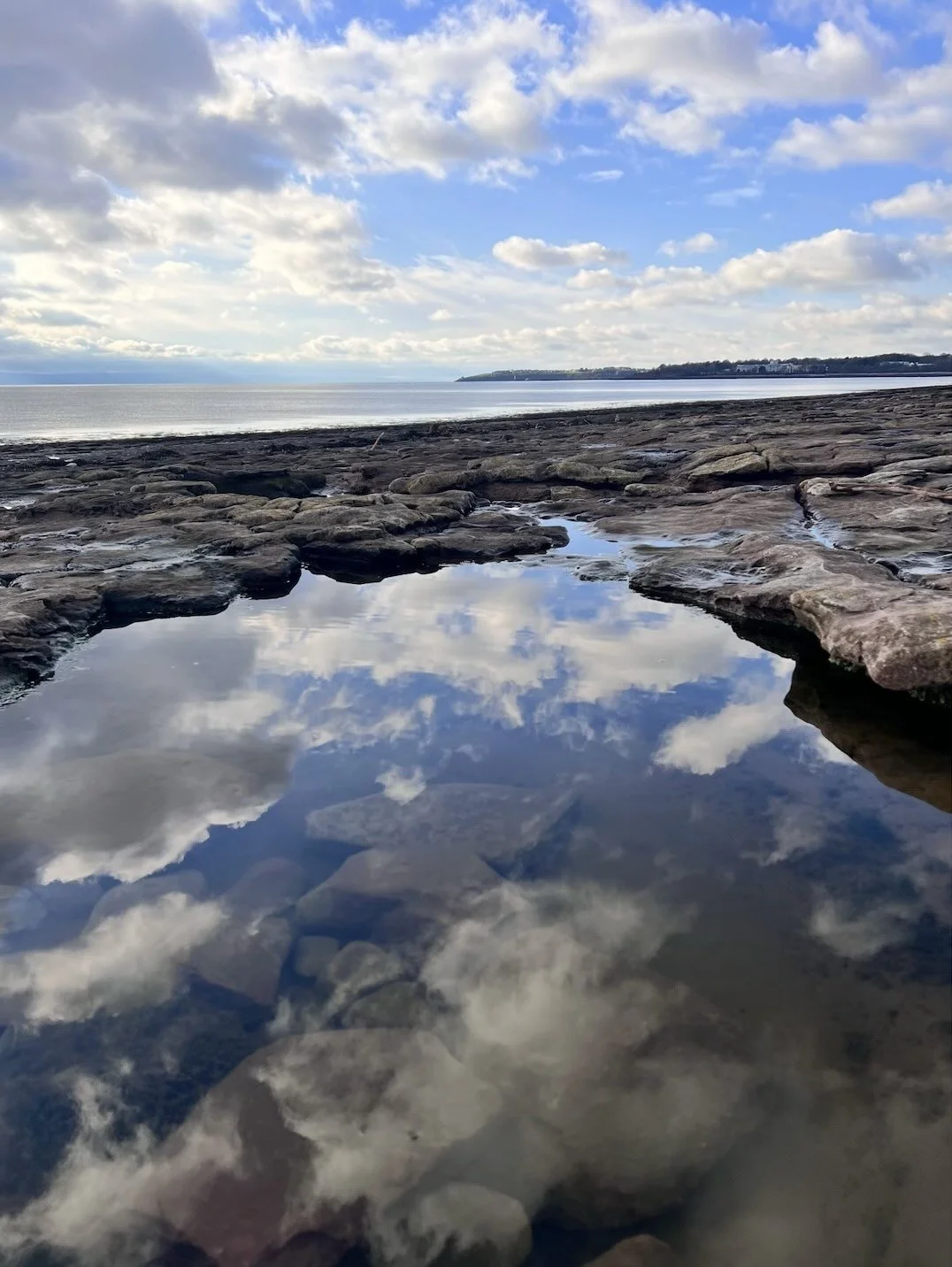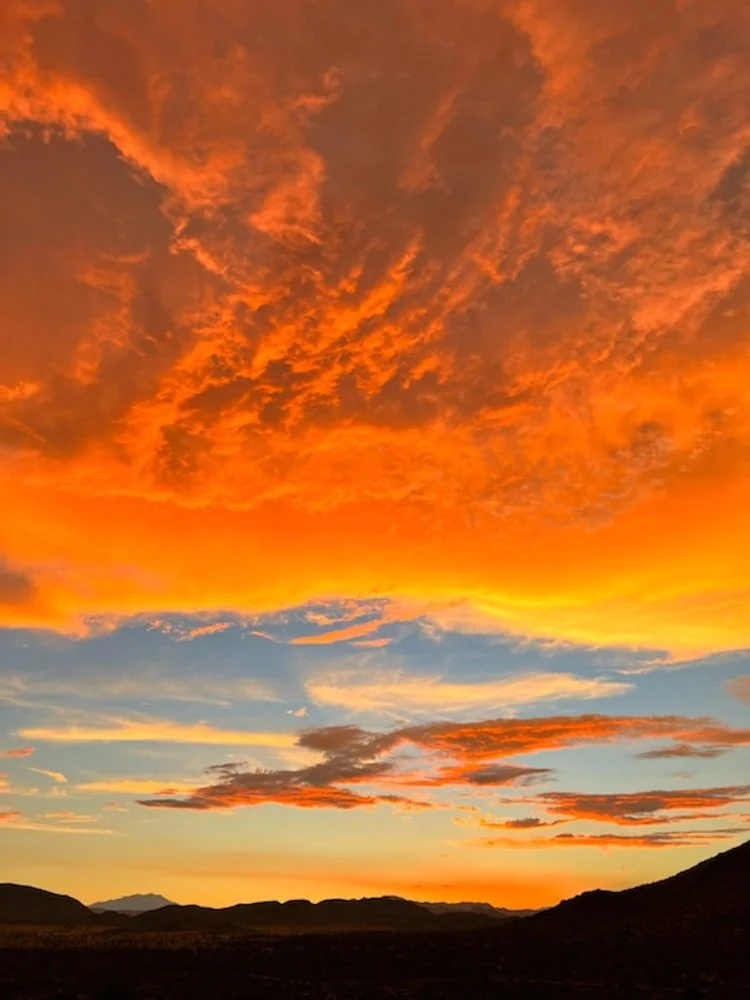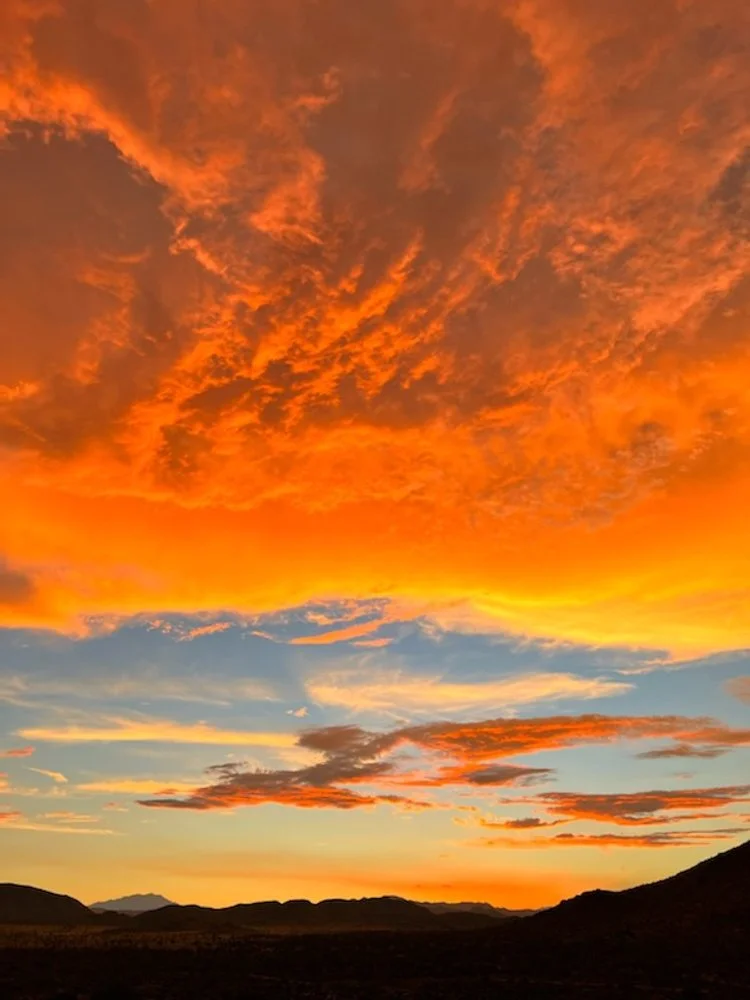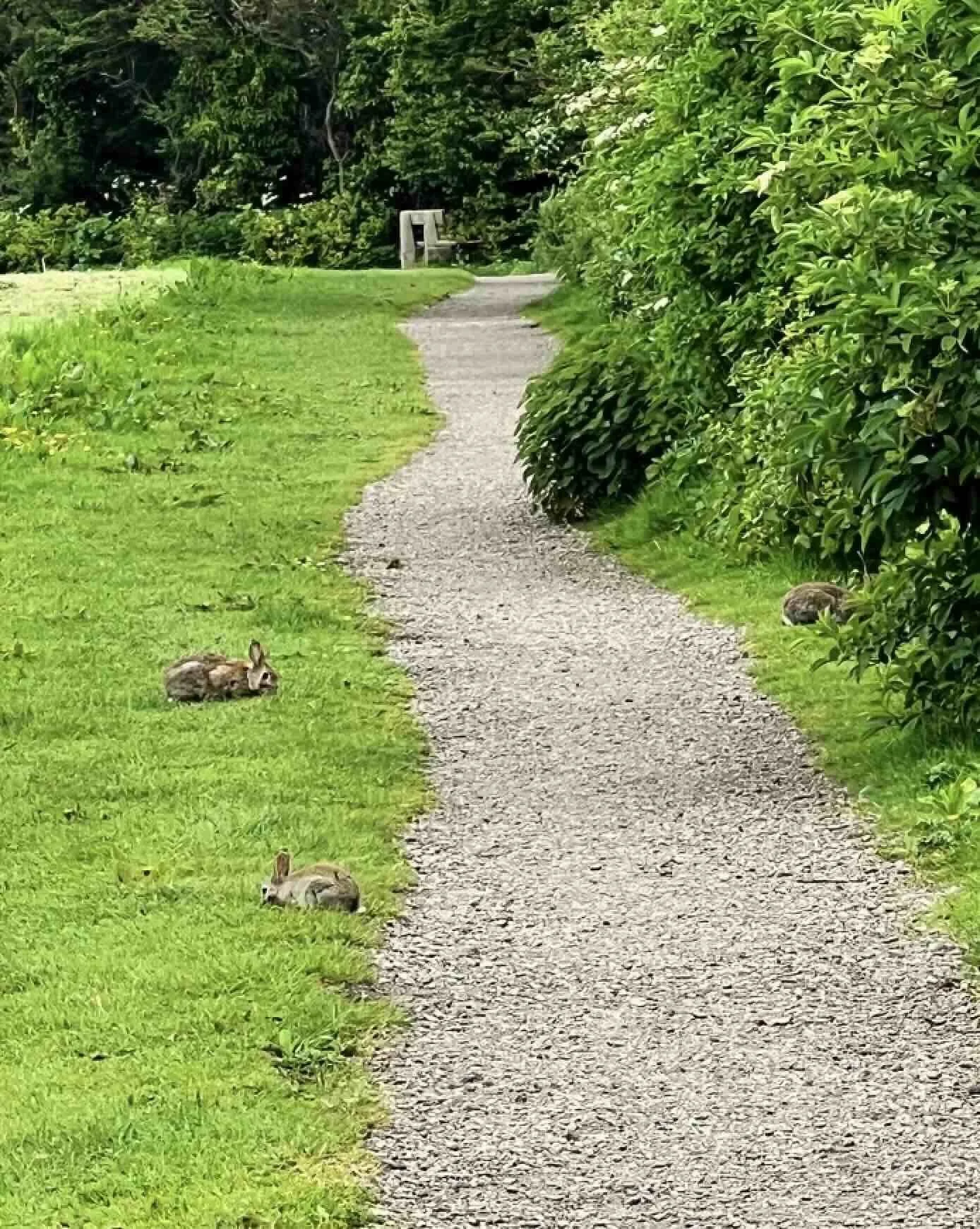
All Roads Lead You
Everyone is unique, navigating a journey shaped by their experiences.
Our perceptions influence our beliefs, which create our reality.
Every path is valid; each one guiding us back to our All-Knowing Self.
Sincerely Searching is about inspiring your journey.
2025 Collection of Reflections
Without A Map
Having a plan doesn’t guarantee it’s the right plan. It just makes us feel like we’re doing something.
The Power of the Unknown
Change is change. It’s the unknown. We might have a plan, or we might not. We may not know where to look, what to think, or what to do. This can feel exciting, terrifying, or like a tangled mix of everything at once.
When we have a plan, we feel like we’re moving somewhere. The goal gives us direction. Direction gives us meaning. Even if we’re unsure, at least we’re facing something—thinking things through, acting with purpose. The unknown feels a little less chaotic when there’s something to hold onto. But here’s the thing: both states—having a plan and not having one—are full of unknowns. One just looks more productive.
The hardest place to be—and sometimes the most transformative—is the space of being okay not being okay. No plan. No clear next step. Just a strong desire for something different, without a clue how to get there. Or maybe there’s a plan, but it no longer feels right—or isn’t taking us where we hoped.
The mind says a plan means progress, and no plan—or the wrong one—means failure. But that’s a trick.
Having a plan doesn’t guarantee it’s the right plan. It just makes us feel like we’re doing something. What if not having a plan is also doing something—just not in the way we’ve been taught to believe?
We can learn to trick the mind in reverse. Let it believe that uncertainty is movement. That confusion is transformation. That something is happening, even if we can’t name it yet. Because something is always happening.
No one really knows what they’re doing—start to finish. We’re all figuring it out. So, when we feel lost, maybe the question isn’t what’s wrong with us, but what story we are believing. And if that story doesn’t support us, we get to rewrite it.
Plan or no plan, we are enough in every moment.
Admitting we feel lost is honest. And honesty is a step toward clarity. That step is direction. That is a plan.
Can that be enough when we’re scared—or just confused? Can we recognize that even when the path doesn’t look the way we thought it should, we’re still on it?
Being okay not being okay is an act of self-love. It’s self-care. It’s honest and real. And from that place, we find the next step. We always do—even when it feels like this uncomfortable unknown might be our new forever.
Maybe we’re closer than we think. Maybe we’re just one breath away from something better than we imagined—because we’ve taken our hands off the wheel and allowed something higher to come through.
So maybe the real shift isn’t in finding a plan, but in softening our grip on needing one. Maybe it’s trusting that not knowing is still part of knowing.
Being okay not being okay doesn’t mean we’ve stopped. It means we’re meeting ourselves where we are—with honesty, patience, and a quiet strength that’s often more powerful than “doing.”
That’s not failure. That’s growth.
And sometimes, the most powerful plans begin not with a map, but a pause.
A breath.
A step.
And the courage to let the path unfold.
Sincerely Searching💓
The Meaning. The Doing.
There’s no one truth. No single way. Only your perspective in this moment.
Inner Strength
Ever been with someone who’s colorblind? They don’t see blue the way you do. So, who’s right? Both, in their own way. Blue is just a label we all agreed on long ago. But to a rabbit, blue doesn’t exist—so who really decides what blue is?
Nothing has fixed meaning. Meaning is given—by you. And everyone else does the same.
That’s easy to accept when we’re talking about color. But it gets harder when we’re caught in depression, fear, or anxiety. Those emotions are intense and convincing. They feel like truth. But just because you feel something doesn’t make it true. If you can sit with that idea, you’re already choosing yourself—your sovereignty over reactivity.
Feelings are valid. But they’re not the whole truth.
The shift begins when you stop letting emotions run the show and start observing them instead. Go inward, not outward. Support helps, but real clarity begins when you're willing to face yourself.
Create a moment-to-moment practice of checking in. Notice when you’re not in a neutral space—and let that be okay. Neutrality isn’t numbing out. It’s where clarity lives. From there, you can respond instead of react. Support yourself, rather than spiral.
Being okay with not being okay breaks the cycle of judgment. It brings you back to center—where you’re no longer resisting what’s real but working with it.
Maybe I don’t know—and I’m okay not knowing for now. That’s not weakness. That’s wisdom.
Feeling off doesn’t mean you’re broken. It means something inside you is ready to be seen and healed.
If you don’t go to that place only you can reach, it’ll return—different face, same root. That’s why real healing takes presence, patience, and pattern breaking.
Catch the patterns, the excuses, the stories. They’re not failures—they’re signals. Signs that you’re either avoiding yourself or standing right at the edge of your own sovereignty.
It takes mindfulness, repetition, and self-forgiveness.
Keep at it until it becomes your natural way of being.
You’re with your mind all day long. Make it a space that supports you.
There’s no one truth. No single way. Only your perspective in this moment.
But ask yourself— Is it truly yours? Or is it inherited, conditioned, borrowed?
Who’s telling you what and why—and why are you listening?
Inner work isn’t about fixing yourself. It’s about unlearning what’s not you, so you can remember who you’ve always been.
That’s where your real meaning lives.
Love yourself. Go within.
Sincerely Searching💓
Chasing Comfort
The upside of feeling good is clear—it lifts us up, inspires us, and reminds us of joy. But the downside is that it can lead us into autopilot just as much as feeling bad.
Emotional Freedom
Life offers us the experiences of feeling bad and feeling good—two emotional opposites that can guide our choices and shape our behavior in surprisingly similar ways. When we feel bad, our automatic reactions often take over, like being on "autopilot," without us realizing it. We may try to avoid, suppress, or blame external circumstances for our discomfort. Our busy routines can keep us distracted, preventing us from fully examining what’s happening inside. We mistake mental chatter for self-engagement, thinking that overthinking helps us address the issue. But much of this, along with reactive emotions, is simply another form of distraction. It clouds our reality and makes it harder to make conscious choices.
The downside of discomfort isn’t just that it feels bad; it’s that we often react unconsciously, letting habits dictate our behavior. We lash out, shut down, or seek quick fixes to escape the discomfort. Yet, feeling bad serves a purpose—it reveals what’s hidden beneath the surface. It shows us where our actions, beliefs, or circumstances aren’t aligned with what we truly want. It points to old wounds needing attention or areas in our life where change is needed. When we pause to observe our reactions, instead of letting them control us, we gain the ability to respond consciously.
But what about feeling good? When something feels good, we naturally want more of it. Life is hard, and moments of relief can feel like rewards for enduring struggle. We often structure our lives around the pursuit of feeling good—career success, relationships, or material comfort. But here’s the trap: the more we rely on feeling good, the more we lose balance. We give away our power, time, and energy to the need for comfort. This craving distorts our judgment, preventing us from seeing uncomfortable truths. We may even act out of fear of losing those good feelings. Instead of engaging with life as it unfolds, we get caught in a cycle of craving pleasure, reacting impulsively rather than thoughtfully. In chasing highs, we forget how to simply be and find fulfillment in the quiet, steady moments of life.
The upside of feeling good is clear—it lifts us up, inspires us, and reminds us of joy. But the downside is that it can lead us into autopilot just as much as feeling bad. We become so attached to the high that we chase it, overextending ourselves in jobs, relationships, or habits that aren’t balanced. We lose perspective, making choices based on maintaining a feeling, rather than what’s truly right for us. The question isn’t whether feeling good is bad—it’s whether we are present and aware while experiencing it, and whether we need it to feel complete.
Ultimately, true freedom comes from embracing neutrality—not by eliminating one emotion over the other, but by staying clear and steady no matter how emotions fluctuate. When we stop clinging to the highs and avoiding the lows, we break free from the emotional cycle. By practicing awareness, we free ourselves from the need to chase pleasure or avoid discomfort, living with true emotional freedom.
Sincerely Searching💓
Lost I Feel
A poem
Discovering
Lost, I feel,
Trapped in a mind,
Uncomfortable in a body,
My thoughts too loud,
My emotions overwhelming.
I want to Be.
To be okay.
To know that when I’m lost,
I’m not.
I am healing,
Letting go,
Welcoming in.
The illusion reveals itself.
I’m discovering.
The knowing was here,
Waiting patiently for me.
“I don’t know,” I say
But lost is no longer my truth.
Discovery is.
I participate now.
I engage now.
The falling stops.
I stand grounded,
One foot in front of the other.
I meander.
Lost is behind me.
Discovery enters my door,
Lighting the way.
Courage fills me.
Now, I have choice.
Adventure awaits.
Learning unfolds.
Lost is no more.
It never truly was.
Sincerely Searching💓
The Stone Bathtub
My gorgeous friend, living on the other side of the world, has this beautiful stone bath.
The Flow of Life
My gorgeous friend, living on the other side of the world, has this beautiful stone bath. Despite the distance, we are deeply connected—celebrating the beauty of life while supporting each other through its challenges. Because of our time zones, as we chat, she often enjoys her evening soak while the sun shines brightly here.
I often think about her stone bathtub—how it supports the water by holding it, keeping it warm for hours, providing her comfort and love. As someone who loves water, I understand the cleansing power of a warm soak. There’s something about being submerged—how the water softens the body and invites a deeper release from the day.
It got me thinking—how can I create that same calm release without a beautiful stone bath? How do I allow myself to unwind—not just from the day, but from the constant chatter of my mind?
This thought reminded me of something a healer once told me. She said I designed my brain to take in a lot of information, but my struggle lies in overthinking rather than simply storing and retrieving knowledge—the brain’s true job. I remember thinking, What? I designed my brain?!
Before I could process that, she dropped one of those deep-truth phrases—words that instantly downloaded an entire story into my being: “You use your intelligence to get yourself out of trouble just as much as you use it to get into trouble—and you think that’s a good thing.”
WOW. I understood this on a deep level, a knowingness, as flashes of my life ran through my mind. I appreciate when things are given to me bluntly—especially when the news isn't exactly good. My mind hears it more clearly that way. It pushes me out of habitual thinking and into a new perspective, leaving me feeling expansive.
And right. . . the brain’s true job is like a computer storing data—not the one telling me what to see, think, and do, as I had been letting it. I had never heard that before, but I knew it was true. Instantly I could see it clearly:
Brain = computer storing and retrieving data
Mind = processing and interpreting data based on my level of consciousness and belief systems
All information comes from me, but not all of it is truth—it’s shaped by my level of consciousness and inherited beliefs, some of which I may not actually agree with. And this is true for everyone. Nobody is wrong, and nobody is right.
THIS IS WHY YOU TRUST YOUR HEART!
So naturally, I thought: How do I shift from being ruled by my mind’s intelligence to being guided by my heart’s intelligence—the all-loving, all-knowing source within me? My experience is that when I hear my heart’s intelligence (Spirit), it feels like guidance from a kinder, deeper place where I don’t judge or need to rationalize, it just is, rather than the usual noisy overthinking of my mind bouncing me around leaving me more confused. That’s why her words felt so profound—time stood still as they sank in without judgment, revealing a truth I had never considered.
This brings me back to the stone bathtub—a haven of warmth and stillness that supports the body and quiets the mind. Isn’t that what the heart does, too? It gently holds us, offers comfort, brings us a higher perspective, and reminds us that we don’t have to carry everything alone.
That is love—so how can I choose it in my moments? Just as a warm bath holds and soothes the body, I can let my heart hold and guide me. I don’t need to chase or believe every thought—I can let them settle instead of rule me, like water growing still after movement.
In that quiet, I remember I am not my thoughts. I am the one who observes them, the awareness that decides which ones to follow. I am the presence within me, connected to everything around me, like a drop of water in a warm bath, held and carried by the vastness of the stone.
Sincerely Searching💓
The Gift of Being Nobody
Even so, fear lingers in being nobody—
Why do I remain, as somebody with identity?
Oneness
What are these emotions I feel?
So real, overwhelming at times—
Are they me? Are they truth?
Spirit whispers, Real Truth is nothingness.
Yet in their depth, these emotions carve an identity,
A self, a somebody—
But to be somebody is to wear a mask,
A separate self, apart from all that is.
So, I release the need to be somebody,
And become nobody—
At one with all,
Oneness.
Even so, fear lingers in being nobody—
Why do I remain, as somebody with identity?
To learn that the search need not reach outside,
But to remember, in Spirit, all is within,
Whole, worthy—
Never lost, never seeking to be found.
Now, I am here, in nothingness,
Where everything resides.
Home.
Sincerely Searching💓
Is There Common Sense?
A friend once said, “Common sense doesn’t exist.” This made me realize that common sense isn’t universal—it’s shaped by our level of consciousness.
Truth vs Falsity
A friend once said, “common sense doesn’t exist.” This made me realize that common sense isn’t universal—it’s shaped by our level of consciousness.
Dr. David Hawkins’ Map of Consciousness offers a framework for understanding how consciousness influences perception—how we interpret our reality. He developed a scale from 0 to 1000, linking different levels of consciousness to emotions, beliefs, and worldviews. The scale ranges from lower destructive states like shame, desire, and pride to elevated states like love, peace, and joy—each reflecting a shift in conscious awareness.
Hawkins’ research distinguishes between Truth—aligned with courage, willingness, and acceptance—and Falsity, which stems from force, manipulation, and deceit. Based on extensive research and muscle testing (kinesiology), he calibrated this scale, revealing that the human mind lacked a clear way to differentiate Truth (Power: 200 – 1000) from Falsity (Force: 0 – 199).
His findings show that 85% of people calibrate below 200, where guilt, anger, and fear dominate, while only 15% calibrate above, embodying courage, willingness, and reason. The higher-energy minority counterbalances the lower-energy majority, preventing humanity from self-destruction—evidence of the profound energetic influence of those at or above the 200 level of consciousness. Meanwhile, those below 200 (85% of the world’s population) often rely on control and force, which requires external laws to regulate behavior.
For context, Hawkins measured the collective consciousness of nations and found that some calibrate below 200. In these societies, for example, kindness is often seen as weakness. This helps explain why certain cultures or individuals display moral indifference, while others find such behavior unthinkable.
Because everything is energy, Hawkins proposed that history, ideas, and even nations can be measured on this scale. This reinforces that common sense varies by consciousness level. For instance, someone at 250 (neutrality) perceives logic very differently than someone at 125 (desire), as our interpretation of reality is shaped by our conscious awareness.
Understanding this scale allows you to navigate people and situations with greater ease. The intention to raise your consciousness energetically sets you on this path, naturally drawing you toward individuals with higher calibrations and steering you away from chaos. This awareness enables you to discern where to invest your energy, aligning with sources that promote growth. You might attract a more compassionate doctor, avoid a power-driven politician, and break free from repetitive toxic relationships.
Recognizing that people operate at different levels of consciousness frees you from the frustration of trying to change or convince others to see things your way. Instead of judging, observe—seeing people as they are, without attachment or expectation for them to align with your idea of what is “better” or “true.” This helps you respond with awareness rather than emotion, staying grounded in Spirit instead of reacting from ego (mind and emotions). As a result, you become sovereign—no longer dependent on anyone or anything to make you feel safe or validated.
When others operate at a lower level of consciousness, you transcend the situation by allowing them to be. You respond with awareness or choose not to engage, practice self-care by releasing the need to be justified and reflect on why you attract certain experiences. As self-awareness deepens, you reclaim your power, transcend unconscious patterns, and experience reality in clearer, kinder, and more loving ways.
And guess what? As your consciousness rises, you uplift not just yourself, but the world around you.
Sincerely Searching💓
Saying No
Saying no can be an act of honoring yourself, yet guilt—whether from within or others—often tries to convince us otherwise.
Self Respect
Saying no can be an act of honoring yourself, yet guilt—whether from within or others—often tries to convince us otherwise. That voice tells us we are failing others when, in reality, we are learning to be true to ourselves. The weight of guilt can linger, pulling us into unhealthy cycles in our relationships and clouding our ability to access the care and understanding only we can give ourselves.
But awareness, followed by practice, changes everything. The more we stay conscious, the less power guilt, shame, and blame have over our choices. Discomfort is natural—growth often is. In fact, it’s the first sign that something deeper is surfacing. Give yourself permission to not be okay. This takes courage, and in doing so, you’re already shifting your consciousness to a higher level simply by honoring where you are.
As we begin to see discomfort as a sign of growth, we can release the pressure to “get it right”—a self-imposed trap shaped by our own and others’ expectations. Instead, we can turn toward self-compassion. Allowing ourselves to not be okay keeps us present, offering real-time insight, guiding us toward the freedom that comes from facing our inner turmoil. The lesson isn’t outside of us; it’s within us, shaping our experience. The journey isn’t about perfection—an illusion we can never truly reach—but about patience, practice, and the willingness to grow.
Boundaries rooted in self-respect serve everyone, even when they are met with resistance. We cannot truly support others if we abandon ourselves in the process. By honoring our needs, we cultivate deeper authenticity in our relationships—where love is given freely, not out of expectation, but from a place of wholeness.
Some will understand and respect this, while others may not be ready to meet us here. That’s okay. Some relationships need that space, and others may no longer serve us. Letting go—whether of expectations, attachments, or unhealthy dynamics—can feel difficult, but trusting this process is an act of love and self-care. It frees us from the chains of guilt, obligation, or fear—chains only we have the power to unlock.
Self-love is self-care—it is not selfish. Let others be where they are so you can fully be who you are: Spirit, expressing itself as you.
Sincerely Searching💓
Kaleidoscope
I believe in oneness and know, at a deeper level, that we're not truly separate—but I still saw people as distinct individuals making their own choices. If I don’t control their actions, how can what they do come from me rather than happen to me?
Perception
I had heard the phrases "Life happens for you" and "Life happens through you," but I never gave them much thought. Then I came across "Nothing is coming at you, only from you"—and that struck me. I understood it on some level, but not fully. So, I decided to filter my life through that lens, questioning everything. I sensed it would take time to truly grasp, but I was ready to challenge myself and my beliefs. Nearly 20 years later, I’m still doing just that—only now, it’s much easier and far more rewarding.
I knew I played a role in what happened in my life, but I struggled with how this applied to others who seemed separate from me. I believe in oneness and know, at a deeper level, that we're not truly separate—but I still saw people as distinct individuals making their own choices. If I don’t control their actions, how can what they do come from me rather than happen to me?
To understand this, I picture Oneness as a kaleidoscope—each of us a fragment of the same unified source energy, Spirit, coming together to form a collective. When one piece shifts, the entire pattern changes.
This suggests that even if I didn’t directly cause a stranger’s action or a change in the weather, noticing it means I’m a part of it. Since everything is energy, my awareness shapes my perception—my interpretation of the event—which influences my experience of it. Both their actions and my interpretations then shift the kaleidoscope.
To apply this in daily life, shift your perspective from "This is happening to me" to "This is happening for me." I did this the moment my previous employer announced that my position had been eliminated. In that instant, I thought, "Okay, this is happening for me." While I still had to process the emotions that followed, it shifted my consciousness from resistance and fear to acceptance and courage for what’s next. Just under a year later, it is still working!
This conscious choice shifts your energy from powerlessness to sovereignty, allowing you to choose higher-conscious thoughts and experience higher-conscious realities. While the situation may not change, your perception does—empowering you to respond consciously rather than react unconsciously.
When we feel powerless, we get trapped in a cycle that reinforces that state, seeing life as happening to us rather than from us. We become victims of life's uncertainty. By shifting to a higher state of consciousness, we reclaim our power in shaping our reality, remembering that "nothing is coming at you, only from you."
The challenge of choosing our perceptions lies in constantly questioning our beliefs. Do we truly believe what we believe, or have we inherited beliefs shaped by family, culture, and society—living by them instead of our own?
Although unsettling, this questioning empowers us to uncover what we truly believe, helping us break free from inherited subconscious patterns—patterns we might not accept once we realize them. This opens the door to higher conscious and intentional choices in our behavior and responses.
Filtering your life through the concept "nothing is coming at you, only from you" suggests that the world mirrors your inner perceptions. The challenge is not to fight external circumstances (a never-ending battle), but to examine what’s "coming from you"—the beliefs and perspectives shaping your experiences.
This is why two different people experiencing the same catastrophe can have extremely different responses. Our answers lie within, revealed as we change, learn, and shift our perspectives.
Now, we can see the connection between our inner world and outer reality. Even when something happens "out there," we can understand how we play a part. By living from a higher consciousness, we contribute to shifting the world toward a higher consciousness. The kaleidoscope is always shifting, reflecting how our collective and individual energies interact. We can choose to recognize how our thoughts, beliefs, and awareness shape the picture it creates.
This is how we change the world—an unfathomable task until you realize it's an inside job.
Sincerely Searching💓
Journeying Back To Self
Life isn’t about a final destination—it’s about how we travel: with awareness, openness, and acceptance. By embracing each step, we reconnect with our true essence: Self (Spirit), living as a self.
True Self
The subtitle of Sincerely Searching, "Journeying Back to Self," reflects the belief that we are created from all-powerful, infinite energy, experiencing life in physical bodies with unique identities. Along the way, we often forget our connection to this source. Rediscovering our true Self—Spirit—reconnects us to the energy field of Oneness, where we can access higher levels of consciousness.
As we experience life, we share these moments with this source, learning what it means to be ourselves (as a self). In doing so, we deepen our connection to our true essence, aligning more fully with a higher truth. The "self" refers to the identity shaped by family, society, and external influences, while the "Self" is our true essence—an all-knowing, boundless energy. Often, we navigate life through this constructed self, influenced by inherited beliefs that may not align with our true values. This unconscious guidance steers us toward paths we don’t want to travel, until we become aware and can consciously choose a new direction, reconnecting with our true Self. This process deepens as our consciousness evolves.
This journey requires courage. Questioning beliefs tied to our identity can be overwhelming and destabilizing, but awareness strengthens our connection to Spirit, opening us to the answers we seek. When I find myself challenged, I ask: "How did I get here? What’s my role?" In these moments, I recognize outdated beliefs, past influences, or societal expectations that limit my growth. Awareness gives me the power to transform.
The self (ego—mind and emotions) is reactive, while Self (Spirit) is quietly present, awaiting our attention. The Self (Spirit) trusts that every choice, whether conscious or unconscious, serves our growth and evolution. It doesn’t intervene but lovingly allows us to learn and evolve through our journey, offering guidance whenever we choose to seek it, gently leading us back to our true essence.
To align with Spirit, I place my hand on my heart to activate it, pause, breathe, and set the intention to release attachments to external expectations. I repeat the Release Mantra: "I release these thoughts, feelings, and emotions because they no longer serve me," inviting a new consciousness rooted in Spirit to become my operating system, trusting the Self (Spirit) to guide the shift.
The Self (Spirit) is universal, transcending individual experience. Regardless of our unique paths, we all share this essence. Journeying back to Self means shifting from identifying with our persona to recognizing our limitless nature. Life isn’t about a final destination—it’s about how we travel: with awareness, openness, and acceptance. By embracing each step, we reconnect with our true essence: Self (Spirit), living as a self.
Sincerely Searching💓
Hand On Heart
The more I learn, the more I crave simplicity, especially in a chaotic world. Here’s a simple, powerful practice.
Inner Wisdom
A common theme throughout these stories is the importance of connecting to your true Self while honoring who and where you are along your journey. How we do this is entirely up to us. There are countless healing modalities to explore, as well as our own internal wisdom.
The more I learn, the more I crave simplicity, especially in a chaotic world. Here’s a simple, powerful practice.
When I’m overwhelmed, struggling, or caught in a whirlwind of overthinking (a habit that often leads me into more trouble than resolution), I place my hand on my heart and repeat the Release Mantra: I release these thoughts, feelings, and emotions because they no longer serve me.
The physical hand-on-heart connection allows me to instantly pause, take a breath, and release the tension in my body. It permits me to become aware and reset instead of letting my loud mind overrule me. Then, I repeatedly say the release mantra, creating space for higher intelligence to flow through.
I call this activating "heart intelligence"—an inner knowing that goes beyond thoughts and mental chatter, transcending logic and reason. It is our source of wisdom, Spirit, patiently waiting to be accessed, no matter how loudly our minds impose demands, stir up fears, or amplify emotions.
The mind believes it needs to be in control, often forgetting that it is the heart that keeps it alive. The heart is the source of your vitality—the rhythm that harmonizes mind and body. Without the heart, the mind couldn’t even think. Yet, in our busy lives, we often let the mind take charge, overlooking the wisdom and life force the heart provides when we allow it.
You are divine energy, Spirit, and this connection can never be severed—only tuned out. By tuning into your heart’s wisdom, you access a powerful force that transcends the ego, guiding you with love, peace, and clarity.
The journey isn’t always easy. The mind will resist, and it may take time for this practice to become second nature. But the more you practice, the easier it becomes to calm your mind and reconnect. Over time, this reconnection allows your journey to be more enjoyable, loving, and awe-inspiring as it unfolds.
Sincerely Searching💓
Feeling Bad for Feeling Bad
What does Feeling Bad really mean?
Self Awareness
I caught myself in a conversation, feeling bad about my feelings. That realization made me pause—I wasn’t feeling bad. I was feeling hurt. And I felt bad because my hurt was making me angry.
Until that moment, I hadn’t realized how often I labeled my emotions as feeling bad instead of recognizing them. I thought, Wow, how many times have I done this to avoid myself? The irony struck me—I’m the one person I can’t avoid.
Every time I said, “I feel bad,” I sank deeper into confusion, masking the sadness I was really feeling. I didn’t realize that dismissing my emotions trapped me in a numbing state, preventing me from gaining clarity and helping myself.
When I chose to dig deeper, I realized my feeling bad was actually the pain I carried from a relationship. It wasn’t what I had hoped for—I wanted commitment, but he didn’t. That hurt. And that hurt made me angry. To protect myself, I made it about him. But then the guilt came—he wasn’t trying to hurt me; he was just doing what felt right for him.
Sitting with my sadness, I saw how much energy I had been leaking by giving my power away instead of simply acknowledging my hurt. Blaming him—building a story around why he couldn’t commit—was easier than letting myself fully feel the sadness of it not working out.
I try to remind myself that life happens for me, not to me—but I still forget and sometimes blame things outside myself instead of looking within. While I catch it faster now, it still surprises me how automatic the habit is. Pain incoming? Shut down. Don’t feel it. Avoid it. But really, that just means Pain incoming? Store it up. Let it get stuck with no way out, only to cause more pain. No thank you, I’m done with that.
Recognizing my hurt allowed me to see the anger it concealed. Acknowledging that anger gave me the power to consciously let it go. Meanwhile, saying “I feel bad” had kept me trapped in a loop of confusion. By validating my emotions—hurt and anger—without over-identifying or giving them a story, I reclaimed my emotional sovereignty.
Now, I pay attention to the words I use as clues into my inner world. I listen to how I express my feelings—to myself and others. When I repeat a story for validation, I stay stuck in my swirl and dump my emotions onto others. But when I listen, I can turn my swirling thoughts into clear sentences—and find clarity.
Next time you catch yourself saying, “I feel bad,” pause and ask yourself: What am I really feeling?
Sincerely Searching 💓
Grace, I Am
A daily prayer.
Mindfulness and Grace
Grace, I Am
I start today with grace on my mind
Grace I Am, though my mind may tell me differently
As the day escapes my mind, I know my heart never forgets
It beats for me to remember
Grace I Am, everything and everyone in this day
I pay it all respect without it defining me
No definition can define me
For Grace I Am, and my heart beats to remind me
Sincerely Searching💓
In The Know
What if being "in the know" isn't what you think?
Living In Spirit
The ideal state is living in Spirit—where we connect with our higher, loving Self, the Source of all creation. But in a world filled with duality (right/wrong; good/bad), it’s not always easy to maintain this connection.
When I’m knocked out of Spirit, whether by my own emotions or the energy of others, I’m not my best self. However, when I remain conscious—fully aware in each moment (which takes intention and practice)—I can navigate life guided by Spirit, a higher self that operates free from drama and chaos.
When I’m not conscious (aware of my thoughts), my ego often takes over, allowing emotions that don’t reflect my true Self to dictate my actions, leading me down more difficult paths. My ego is a part of me, so I don’t have to try to control it, as that only amplifies it. But I can be aware of when it has taken over my thoughts and actions.
Being conscious—observing our thoughts and emotions without letting them define us—requires ongoing awareness and practice. It’s easy to slip and allow our mental and emotional states to become the decision-makers, thus shaping our reality. While I’m not dismissing the validity of our thoughts and emotions, I don’t want them (the domain of the ego) running the show. I want Spirit in charge.
The ego can be loud and convincing, often tricking us into believing we’re aligned with Spirit when we’re not. When I pause and consciously reconnect, sometimes all I can do is tell myself, “It’s okay to not be okay.” This helps me become aware of my thoughts and negate them by repeatedly saying, “I release these thoughts, feelings, and emotions because they no longer serve me.” This practice helps me stay present and prevents my thoughts and emotions from taking control and creating false stories and beliefs.
Often, the emotions or thoughts I’m wrestling with aren’t even mine—they’re ones I’ve unconsciously absorbed from others. We share an energetic field where everything exists for everyone to access. So, how often are we letting our lives be driven not only by our own emotions—but by someone else’s?
The question “Would you rather be right or free?” also helps me step out of the ego’s need to be right and return to a neutral, centered state. Everyone is entitled to their own perceptions. So, when others try to impose their beliefs on us, we can recognize that it often comes from a place of fear, lack, and insecurity. We don’t have to believe it, nor do we need to take on their emotions as our own. When we’re in Spirit, we respect others’ perspectives as their truth while standing in our own sovereignty. In Spirit, we don’t need to make others wrong to feel right, and we’ll always know what to do in any situation.
As systems break down and restructure, and as strife and chaos grow more visible, discernment becomes essential. Everyone is entitled to their opinions, but it’s crucial to pay attention to how we feel—not just what we hear. Words carry energy, and even if a message aligns with our beliefs, our emotional body might signal otherwise. The primitive part of us may be subconsciously triggered, putting us in a lower-level emotional state, making it harder to be aware and critically discern. If you find yourself here, repeatedly say, “I release these thoughts, feelings, and emotions because they no longer serve me.” Let Spirit guide you to what is truly important to “know.”
Being informed doesn’t mean constantly immersing ourselves in the chaos, imposing our viewpoints on others, or feeling compelled to stay “in the know.” True knowledge comes from tuning into our inner guidance and trusting it to reveal what we need to know. Emotions, while valuable indicators, are not meant to be in control—they can guide us to pause and reconnect with Spirit for clarity.
Living in this way allows us to navigate life from a powerful, loving alignment with our higher self, sovereign to the world around us—Spirit.
Sincerely Searching💓
💓 A transformative experience The Spirituality of You Being You.💓
The World Is Praying
Despite the devastation, there is a palpable awareness growing
Resilience - Standing Tall
Amid the fear and grief of living through the 2025 Los Angeles fires, I sense a powerful energy emerging—an energy from loving, focused prayer. Despite the devastation, there is a palpable awareness growing—a collective consciousness uniting us all.
The world is praying, and I can feel it deeply.
This tragedy is a poignant reminder that everything has two sides, with a wide spectrum in between. Loss and devastation can coexist with strength and growth. When I consciously engage with a situation—observing my thoughts rather than being controlled by them—I strive to honor both sides. Sometimes it takes time, but eventually, I find a sense of balance. With this conscious awareness, I can choose a higher path instead of letting lower-vibrational emotions dictate my actions.
Rejecting the "bad" parts of life creates dependence on the "good" to feel stable. Life’s challenges often carry hidden lessons designed to help us grow into stronger, more resilient versions of ourselves. While we frequently focus on the light, we must also acknowledge the shadow. Honoring both—though incredibly challenging—offers a perspective that transcends duality. It’s not about right or wrong but about cultivating conscious awareness to navigate life from a higher vibrational state. This awareness can open the door to solutions we might never have imagined, bringing a sense of wonder and grace to what lies ahead.
As we face these fires, I choose to stay present and aware. The emotions I feel—whether they are my own or projected by others—serve as reminders to reconnect with my inner guidance. From this place of higher trust, I can make decisions grounded in resilience and love, rather than being driven by fear.
Sincerely Searching 💓
Trust In A World Aflame
As I sit in my backyard, with ashes from the January 2025 Los Angeles fires falling around me, I wonder:
Unity in Loss and Transformation
As I sit in my backyard, with ashes from the January 2025 Los Angeles fires falling around me, I find myself wondering: How can I feel love in this moment?
Living just two miles from the fire, I sense that what is unfolding goes beyond anything we can fully comprehend. Each of us experiences the world through a unique lens—our ability to think, feel, and perceive is a profound gift. No one is entirely right or wrong. The experience simply is, and in that, there is something sacred.
Los Angeles is leaving behind an old way of being, joining other cities around the world undergoing similar transformations. With the loss and sadness, there is a profound sense of unity—a transcendent energy created by the collective prayers and love directed toward us. This intentional energy has lifted me into a heightened state of trust and awareness.
We all encounter loss and sadness throughout our journeys. Sometimes, the most powerful thing we can do is simply allow ourselves to be where we are. Choosing that stillness creates space for our higher, all-knowing self to quietly remind us of our power—the power to shape our perceptions, honor the perspectives of others, and trust the unknown without seeking external validation.
Standing in my power as I witness my city burn is not how I imagined this moment. Feeling the world’s collective love and prayers—and offering my love and prayers back to the world—is also far from what I envisioned.
Amid the chaos, confusion, loss, and grief, I choose to see Los Angeles rising from the ashes—rebuilt, better, and stronger. I choose to trust the quantum field, where all possibilities exist, and to draw from it the inspiration, solutions, and next steps that will care for everyone, even as the fires rage.
Sincerely Searching 💓
Loving from Guilt
How did I not know I was loving from guilt for 10 years?
Self-Forgiveness
I care for a sweet feral cat named Kitty, who adopted me in 2014. Oh, how I love her! I sit with her while she eats throughout the day, giving her affection. Since she's an outdoor cat (I'm still working on getting her to voluntarily come inside), I can’t leave her food outside unattended because of other animals. So, sitting together has become our routine. If something disrupts this, I become annoyed. I get upset if a loud noise or a neighbor scares her off. I obsessively wait for her if she doesn’t show up at her usual times, and I even feel guilty if I have to leave first when we're together.
For years, I wondered why I felt so out of balance in caring for her but didn’t explore why. I kept telling myself it was because I loved her and worried about her living outside in the city. After ten years of this, I finally heard that quiet inner voice whisper, You’re loving from guilt. I knew exactly what that meant and that I wanted to stop it.
When Kitty first showed up, she had kittens. I agreed to have her fixed, and when she returned from the procedure, her kittens were gone. I was shattered. I blamed myself, and the guilt was unbearable. Over time, I buried the memory because it hurt too much. I became determined to take the best care of Kitty, but at what cost?
In that whispered moment, I realized my love for Kitty had been clouded by buried pain. These hidden emotions fueled my intensity, keeping me trapped in guilt and the need to control, leaving me stressed and agitated. Hearing that quiet voice tell me the truth I had subconsciously known all along was like having the prison door open and my shackles gently fall away. I wanted to stop this old pattern and focus on practicing love—for myself, for Kitty, and for everything that once triggered me.
Why do we so often make love conditional, even when we know that isn’t real love? It seems like we’re trying to protect ourselves, yet we end up causing more pain instead of allowing more love. Animals love unconditionally—that’s why I love them so deeply.
I realized this operating from guilt pattern wasn’t just about my love for Kitty—it extended to other areas of my life as well. True love trusts and accepts whatever happens in each moment, without judgment. It isn’t conditional. That sounds like freedom and I want it.
This feels overwhelming though. How do I tackle being unconditional after a lifetime of conditional behaviors? For starters, I want to stay conscious of my emotions and stop running from them. Then, practice trust that I will learn how to navigate as I go. In this case, it only took a moment of clarity for me to admit that guilt was driving my intensity in caring for Kitty. There was nothing more to unpack.
So, I forgave myself. I released my self-judgment. The realization was profound, and the choice to change became effortless. When I feel that familiar urge to control tighten in my body, restricting my breath, I pause and choose to stay present instead of letting it control me.
Now, Kitty and I hang out peacefully. If she gets scared off, I patiently wait for her return. If she’s off schedule, I trust she’ll show up when she’s hungry. I’m fine leaving first when I need to. While I knew this was the logical way to be, it now feels like a choice, not a struggle.
What’s amazing is that without that conditional, guilt-driven love, there are fewer disruptions! This is what it means when you change: everything changes. Kitty and I now share a calmer, happier connection, and I no longer need to play the self-imposed role of "momma mountain lion" ready to attack.
Life will always present challenges and emotions that test us. It’s natural to want to avoid pain, but the reality is, we can’t escape it. At some point, we must face it—or it will face us. This isn’t easy, but with practice, it becomes less scary and more natural.
Staying conscious, being honest, and setting clear intentions, we can change how we relate to our struggles and feel safer in doing so. Sometimes, a single realization—like You’re loving from guilt—can shift everything in an instant, moving us from pain to a healthier, more loving connection with ourselves and those we care for.
Sincerely Searching💓
You Are All Of It
You were created by a divine, all-loving energy, which makes you divine, all-loving energy—no matter how you think of yourself, what has happened, or what will happen.
Divine Energy
You were created by a divine, all-loving energy, which means you are divine, all-loving energy—no matter how you think of yourself, what has happened, or what will happen.
This divine energy doesn’t carry labels like good or bad, right or wrong. It simply is. Being everything means being nothing at the same time. When this energy is everything, it is YOU, having an experience and reflecting back to itself what it’s like to be you. When it is nothing, there is no "you" or anyone else—only Oneness. This means you are no longer energy expressed in a physical vessel with an identity; you are back in Spirit (Source Energy).
You were created as a unique expression of this divine energy. No one else experiences the world as you do, and no one else knows what it’s like to be you. You came from Oneness to have experiences. So, why try to be anyone other than yourself? A self, learning who it is through the journey.
In a society that is constantly telling you how to be, what to do, and how to think, why not become conscious of the fact that you can choose your thoughts? Choice is a gift. We can let our thoughts control us, or we can choose our thoughts—especially when they challenge us, becoming overly critical and judgmental.
Each experience, whether joyful, messy, or painful, is an opportunity to grow. Because you are created from divine, all-loving energy, you don’t have to follow any specific path or timeline to "get it right." You simply are, as you are, and every moment unfolds as part of your journey.
Because the source of your being is Oneness, surrender fully to every experience, knowing with unwavering certainty that you are the embodiment of it all.
Sincerely Searching💓
Energy 101
I couldn’t and wouldn’t even begin to claim that I understand energy; it is both mysterious and wondrous. What I can do is clarify some of the language to support the concepts.
Consciousness
I couldn’t and wouldn’t even begin to claim that I understand energy; it is both mysterious and wondrous. What I can do is clarify some of the language to support the concepts.
These definitions reflect my perceptions at the moment I’m writing them. I meditated on each definition with the intention of providing a basic understanding of the concept. Each definition can be complex, vast, and vary based on one’s level of consciousness. Anything that does not resonate with you deserves your perspective and further research.
Energy – Everything is energy, and energy is everything; it encompasses all that you feel, see, and cannot see. It cannot be destroyed, but it can take different forms.
Thoughts and (sometimes) emotions cannot be seen; however, once created, they cannot be destroyed:
Holding onto anger can create illness in the body.
Thoughts do not stay in your mind; once created, they are out in the field.
You are energy; once you leave your body, the energy takes a different form.
Chaos – undirected energy
Conscious – Awareness
Subconscious – Unawareness
The Field – the atmosphere, a realm in the quantum field
Realm – An energetic field of consciousness.
Visualize a gridded matrix where certain connected squares are the same color, while other connected squares are different colors. These sections represent realms within the matrix.
Quantum Field – A field of energy where everything exists all at once, with no time and no space.
Visualize your version of a ball of source energy pulsating in every direction. The pulsating energy represents every thought that has been thought, every emotion felt, every scenario, and every outcome to every kind of situation – all from the past, present, and future (combined into no time for access at any moment).
Matrix – A coded holographic construct of reality in the quantum field.
Visualize a gridded matrix, where each square represents an experience playing out.
For example, planet Earth is a matrix, and every being is having their experience in grids within the overall grid.
Hologram – A projection of energy in a form.
Star Wars is a great example of how R2-D2 projects a holographic Princess Leia delivering a message to Luke Skywalker.
Another example is that your physical body has a mirroring holographic body surrounding it. When you physically remove an organ, that holographic organ still exists in your holographic body.
Frequency – an energetic code that acts like a radio signal connecting to vibrations
Everyone on the planet is constantly emitting their thoughts and feelings into the field, the vibration of each thought and emotion has a code and the intensity of each code creates the intensity of the frequency
A few of examples:
The closer to a mobile tower the stronger the frequency (signal) the further away from a tower the weaker the frequency (signal)
The more joy, love and happiness emitted in the field the stronger that frequency is available to everyone to feel
The more despair, sorrow and fear emitted in the field, the stronger that frequency is available to everyone to feel
Vibration – Everything possesses a vibration, a coded energetic reverberation or resonance that is emitted into the field and connects to a specific frequency.
For example, words carry coded vibrations:
Self-Centered emits a coded reverberation with a lower, slower resonance.
Self-Love emits a coded reverberation with a higher, faster resonance.
Levels of Consciousness (LOC) – The brilliant work of Dr. David Hawkins on the Map of Consciousness is both incredible and highly recommended. Exploring his insights will shift your consciousness. He created a chart that explains the various levels of consciousness (LOC) and their calibration levels. According to his findings, anything below 200 lacks truth and weakens the mind. All energy can be calibrated—including your own.
Force: 0–199 – Represents the lower levels of energy known as Force, associated with a primal survival mindset.
Power: 200–1000 – Represents the higher levels of energy known as Power, associated with a thriving mindset.
Multidimensional – Refers to multiple levels and layers of consciousness that are all interconnected.
Imagine a thermometer as the connecting unit, where each temperature represents a different dimension with its own specific range of levels of consciousness (LOC).
Now, visualize the human body functioning in the same way as the thermometer. The body is the unit, and the human’s level of consciousness determines which levels and layers of consciousness it can access.
For example, if someone calibrates at an LOC of:
100, Fear is the baseline for their choices.
500, Love is the baseline for their choices.
All LOC are accessible to anyone by adjusting their calibration.
Timelines – Refers to an infinite number of potential experiences available to an individual based on their choices.
Imagine yourself standing at a crossroads; the choice you make determines which road (timeline) you follow to continue your experiences.
Ethereal – An energetic, non-visual realm within the quantum field that holds the potential to transform thought into matter.
Imagine a cloud shifting its form as it moves, eventually dissipating into nothingness.
Convergence – The ethereal meeting point where thought, choice, and action align.
Imagine two squares on a grid coming together to form a single square within the grid.
Trusting this meditation and feeling brave enough to share it.
Sincerely Searching💓
